Learn about the secret of Mercury formation
Although they know the planets orbiting stars in galaxies, the problem they form is still a subject of debate. Despite the wealth of the world in our solar system, scientists are still not sure how planets are formed. Recently, two hypotheses were made about "the role of champions".
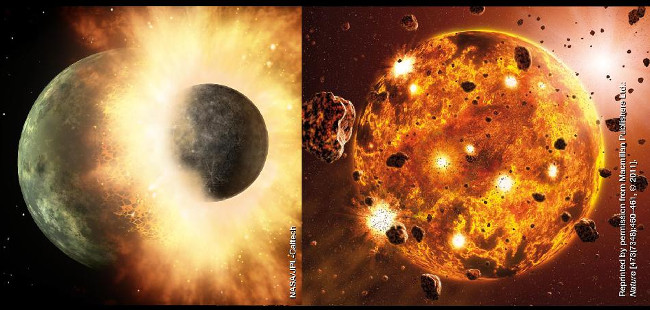
The first widely popular theory is that " core accretion " works well with the formation of planet Earth like Mercury but has problems with giant planets. The second hypothesis is that the " unstable " disk method can explain the formation of giant planets.
Scientists are continuing to study the planets in and out of the solar system to better understand these methods.
Core deposition model
About 4.6 billion years ago, the Solar System was a cloud of dust and gas called the solar nebula . Gravity destroys matter itself when it starts spinning, forming the sun in the center of the nebula.
With the increase in the gravity of the sun, the remaining matter began to gather again. The particles attract close together, bound by gravity, gathered into large particles. The solar wind wipes out lighter matter in nearby areas, leaving only heavy, rocky materials to create smaller worlds on the ground like Mercury. But more than that, solar winds have little impact on lighter matter, allowing them to merge together to form gas giants. Asteroids, comets, planets and moons are created in this way.
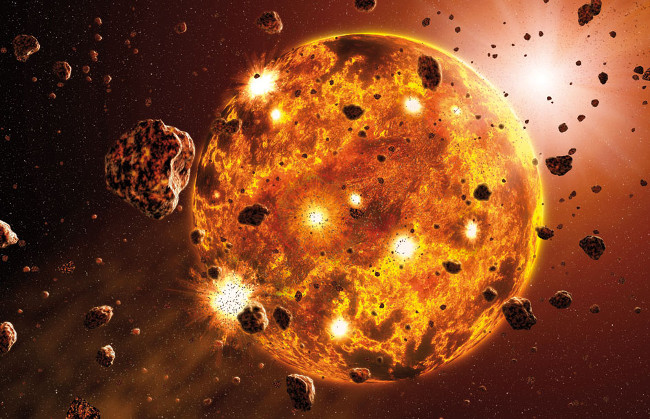
Like Earth, Mercury's metal core is formed first and then gathers lighter elements around to form a shell and cover. Mercury is like other planets, able to collect larger nebula fragments that make up the atmosphere for it. Unlike other planets, however, the planet's small mass (Mercury is the smallest planet) and its proximity to the sun holds a firm foothold on the gases. The interactions with the solar wind constantly blow up the planets in its atmosphere, even when provided with a flow.
Extracurricular observations seem to help identify core deposits as the formation process is affected. Stars contain many "metals" - the phrase astronomers use for other elements with more hydrogen and more helium - in their cores there are more giant planets than brotherly planets. " poor metal ". According to NASA, core accretion shows small, rocky worlds more popular than giant gas planets.
Discovered in 2005 about a giant gas planet with a giant core orbiting the sun - like the star HD 149026 is an example of extrasolarity that enhances core accretion cases.
"This is a confirmation of the core accretion hypothesis for planet formation and the evidence that these planets should exist in richness, " Greg Henry said in a press release. Greg Henry - an astronomer at Tennessee State University, in Nashvilli - discovered "mysterious" stars.
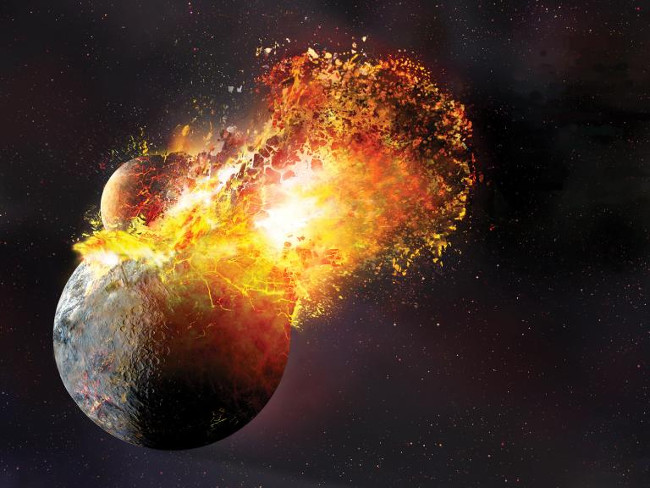
In 2017, the European Space Agency plans to launch CHaracterizing ExOPlanet Satellite (Cheops), - to study the size of planetary planets from "Super Earth" to Neptune. Research on these distant worlds can determine how the planets in the solar system are formed.
"In the core accretion scenario, a planet's core must reach a critical mass before it can develop gas during travel. This mass depends on many physical factors, in the most important is the growth rate of planetary microscopic particles, " the Cheops team said.
By studying the physical development of planets, CHEOPS gives insight into how "worlds" develop.
"Unstable" disk model
Although the core deposition model works well in earth planets, the giant gas planet will need to grow rapidly to keep a significant amount of lighter gases they are storing. But these models cannot explain the rapid formation. Based on the models, this process takes several million years, longer than the light gases available during the early solar system. At the same time, the core deposition model faces the problem of change, just like the sub-planets are capable of spiraling around the sun in a short period of time.
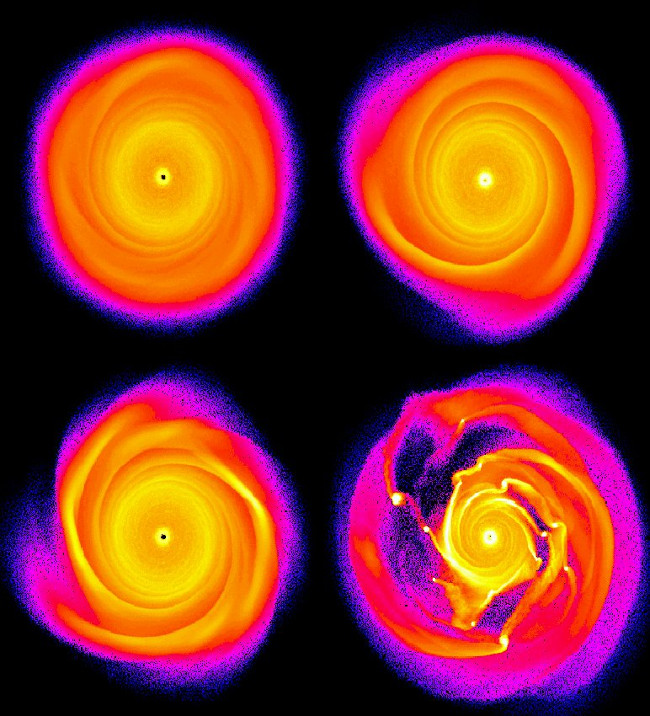
"Unstable" disk model
According to a relatively new hypothesis, "unstable" disks, clumps of dust and gas are bound together early in the solar system's life line. Over time, these accumulated masses gradually merge into a giant planet. These planets can form faster than core deposition competitors, sometimes for at least a thousand years, allowing them to keep light gases quickly disappearing. In addition, they quickly achieved a stabilized orbit to keep them from "walking - dying" to the sun.
If "unstable" astronomers affect the formation of planets, then it should produce large numbers of worlds in a large order, according to foreign astronomer Paul Wilson. Four giant planets orbiting a considerable distance around the star HD 9799 provide observational evidence for unstable flying saucers. Fomalhaut b, an exoplanet orbiting the solar orbit for 2000 years, may also be an example of a world formed through unstable disks, although the planet may also be ejected when it is Working with the planets around.
Pebble accretion (Pebble accretion)
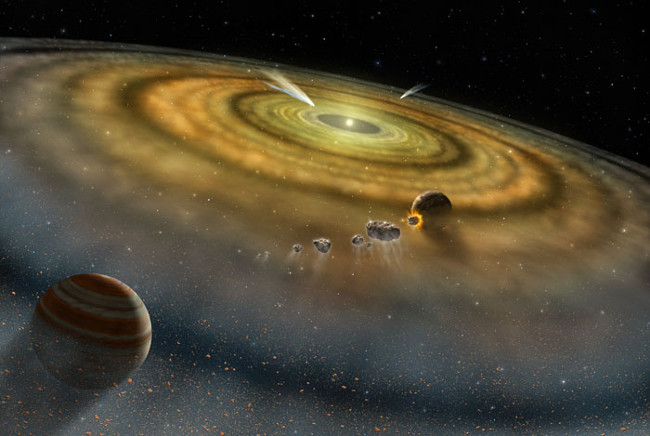
The biggest challenge to core accretion is time - building a massive gas planet quickly to capture the lighter components of the atmosphere. Recently, research on smaller objects, just the size of pebbles, fused together to form giant planets 1000 times faster than previously studied studies.
"This is the first model we know of when starting with the simple structures of the solar nebula, from what the planets formed and ended up are the giant planetary systems that we see. "study author Harold Levison, an astronomer at the Southwest Research Institute (SwRI) in Colorado, told Space.com in 2015.
In 2012, researchers Michiel Lambrechts and Anders Johansen from Lund University in Sweden proposed that small pebbles , which were once removed, hold important elements to quickly build planets. giant .
"They showed that the remaining stones from this formation process, previously thought to be unimportant, could actually be a huge solution to planet formation, " Levison said.
Levison and his team built on a more accurate model study of how small stones form planets, observed in galaxies today. Meanwhile, the simulation before, both large and medium-sized models, destroyed planets the size of pebbles by a relatively stable ratio. But Levison's simulation shows that larger samples act like "bullying", "snatching" stones from mass-sized, medium-sized pebbles to grow at a faster rate. .
"Larger specimens now tend to disperse smaller samples than small samples that disperse them, so smaller samples end up dispersing out of the pebble disk ", co-authored. research author Katherine Kretke, also from SwRI, answered Space.com. " Basically, older boys often bully smaller boys to be able to eat all the pebbles and continue to grow to form the core of giant planets. "
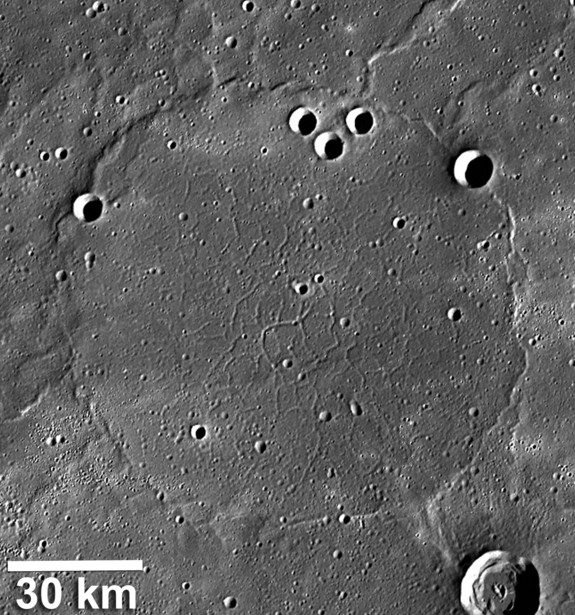 The Messenger image of Mercury shows that the creased lines around the concave surface are formed when the volcanic plains stretch apart.The wrinkle circle is about 100km in diameter, formed through the ring called the ghost crater.(Photo: NASA / Johns Hopkins University of Applied Physics / Carnegie Institution of Washington / Smithsonian Institution)
The Messenger image of Mercury shows that the creased lines around the concave surface are formed when the volcanic plains stretch apart.The wrinkle circle is about 100km in diameter, formed through the ring called the ghost crater.(Photo: NASA / Johns Hopkins University of Applied Physics / Carnegie Institution of Washington / Smithsonian Institution)
Speed change
The studies on Mercury revealed that: " Mercury's core is much larger than expected in relation to the remaining planets. With a radius of 1,800 km to 1,900 km, Mercury core mainly iron, penetrating through 75% of Mercury's diameter and occupying considerable volume, on the other hand, the shell is only about 500-600 km thick. "
In the 1970s, after the mission Mariner 10 , three space planes flew to Mercury, its "exotic" component, including the bulky iron core, leading to a wealth of onions theory. How crystals are formed. One idea is that, if the larger Mercury is formed quickly, it can be inserted before the sun reaches the top. High temperatures from young stars can "cook" many layers of light, leaving only a small shell around the planet.
However, when NASA's MESSENGER mission observed Mercury, study the surface composition. Research shows that the ratios of thorium to potassium are similar to other terrestrial planets. While thorium is a stable element, volatile potassium, can be "cooked" by high temperatures. The MESSENGER findings show that the planet does not suffer from temperature or evolve early but also forms like other worlds on the ground.
Instead, Mercury may suffer a " violent time" in early life. Scientists hypothesize that the original planet, the larger and thicker shell, could easily be attacked by a large body in the solar system's "violent time". Such a collision will blow strongly into its shell in space, leaving behind a large core with a thin crust.
Collisions will occur regularly during the early solar system. A recent hypothesis shows that Mercury may be the "last standing man". According to Kathryn Volk, a planetary scientist at the University of British Columbus, some planets may orbit near the sun, but a series of collisions destroy them all, except Mercury.
"In destructive mode, we are eliminating a survivor, " Volk told Astrobiology magazine.
You should read it
- How far is the distance from Earth to Mercury?
- How hot is the planet of Mercury?
- Detects a hot alien planet, about the same size as the Earth
- The interesting fact about the universe is not quite the same as what we thought
- See Earth through the eyes of a Mercury-bound spacecraft saying goodbye to home
- How big is the solar system?
- How the Sun will look when viewed from other planets
- Decipher the mystery of the origin of billions of tons of ice that exists on Mercury
- Learn the secret of Mars formation
- If 'stray' to any planet in the solar system, what is your chance of survival?
- Some lucky Earthlings should be able to see a Mercury-bound spacecraft fly by our planet in April
- The surface of Venus: Why is Venus the hottest planet in the solar system?
May be interested

Space Science: The order of 8 (or 9) planets in the Solar System

New SMASH 1 satellite discovered in the large Magellan cloud

Space scientists will use 'scanning electron microscopes' to find biological samples on the Red planet

The number of galaxies in the universe is 10 times more than what astronomers thought before

NASA announces more than 1,000 latest Martian surface images

The supernova exploded twice in the universe, surprising astronomers






 Learn the secret of Mars formation
Learn the secret of Mars formation See Earth through the eyes of a Mercury-bound spacecraft saying goodbye to home
See Earth through the eyes of a Mercury-bound spacecraft saying goodbye to home Some lucky Earthlings should be able to see a Mercury-bound spacecraft fly by our planet in April
Some lucky Earthlings should be able to see a Mercury-bound spacecraft fly by our planet in April Decipher the mystery of the origin of billions of tons of ice that exists on Mercury
Decipher the mystery of the origin of billions of tons of ice that exists on Mercury How far is the distance from Earth to Mercury?
How far is the distance from Earth to Mercury? How hot is the planet of Mercury?
How hot is the planet of Mercury?